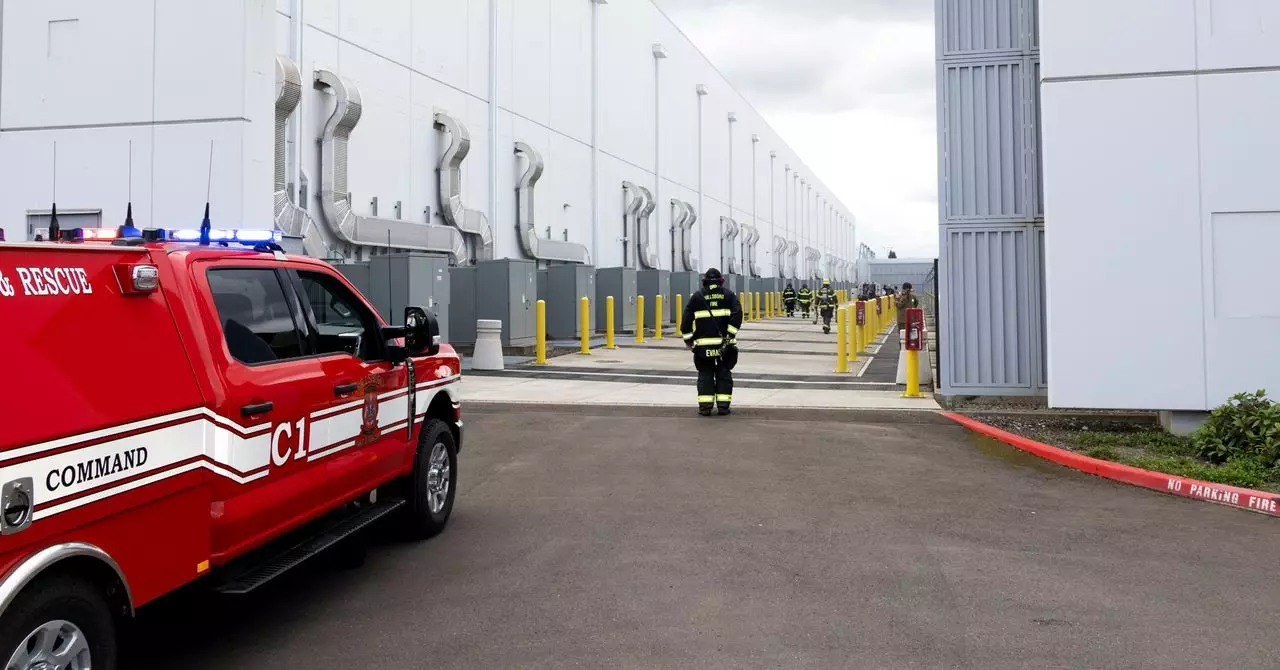In an era where the pulse of our digital lives hinges on vast, complex data centers, recent incidents highlight a disturbing vulnerability lurking beneath the surface. The fire at a prominent data facility operated by Digital Realty on the outskirts of Hillsboro, Oregon, serves as a stark reminder that these technological marvels are not immune to failure. What initially appeared to be an isolated electrical malfunction quickly revealed deeper systemic risks, calling into question the resilience of our data-dependent society.
This incident, which engulfed a critical power unit for hours, underscores the underlying fragility of infrastructure designed to support the digital economy. Despite their perception as indestructible hubs of data, these centers are, in fact, intricate ecosystems of electrical, mechanical, and cooling systems, all susceptible to faults, especially under the mounting load of energy-intensive AI operations. The fire’s origin within a UPS cabinet, a component essential for uninterrupted service, indicates a potentially overlooked aspect of vulnerability: the critical power management units that safeguard data integrity may themselves be weak links.
Electrical Failures: The Silent Threat in Data Centers
The investigation points toward an electrical or mechanical failure as the likely culprit behind the blaze, highlighting the inherent risks of high-power systems operating under extreme conditions. Uninterruptible power supplies, such as the Schneider Electric Galaxy VX units involved, utilize large-scale batteries and complex circuitry. While these systems are designed to provide a lifeline during outages, they also contain elements prone to failure, akin to the hazards posed by high-capacity lithium-ion batteries used in EVs.
This raises pressing questions about the safety standards and maintenance protocols governing such critical hardware. Are these units equipped with enough redundancy and real-time monitoring to detect early signs of malfunction? Or are we operating under the assumption that these systems are foolproof? Given the increase in data loads driven by AI and other advanced computing tasks, the burden on power systems intensifies, and minor faults can escalate into catastrophic failures if not proactively addressed.
Growing AI Demands and Escalating Risks
One of the most concerning aspects of this incident is the context in which it occurred. As AI technology rapidly advances, the energy demands of data centers skyrocket. These facilities now house colossal clusters of GPUs and TPUs, running calculations that fuel everything from virtual assistants to autonomous vehicles. The intensification of computational workloads means higher temperatures, greater electrical stress, and more frequent system fluctuations—all factors that significantly increase the odds of malfunction and fire hazards.
The industry’s response thus far has been reactive rather than proactive. Many data centers have yet to implement sophisticated cooling and real-time diagnostics that could preemptively identify issues before they escalate. This incident should serve as a catalyst, compelling operators and developers to critically evaluate the robustness of their power and safety systems amidst a rapidly changing technological landscape.
The Broader Implications and Industry Responsibilities
Beyond the immediate physical loss and disruption, this fire exposes broader vulnerabilities in our interconnected digital infrastructure. The fact that a single incident can incapacitate services used by millions reveals a troubling fragility. It paves the way for potential cascading failures, data loss, and operational downtimes that ripple across industries.
Furthermore, organizations that operate these critical facilities bear a moral and strategic responsibility to incorporate stronger safety measures, more predictive maintenance, and rigorous fire prevention protocols. This also calls for tighter industry standards and perhaps even regulatory oversight to ensure safety isn’t compromised in the relentless pursuit of performance and capacity expansion.
The Hillsboro fire should be a wake-up call. Modern data centers are the backbone of our digital world, yet their vulnerabilities—particularly when it comes to electrical failures—remain underappreciated. As demand for AI-driven services accelerates, so must our focus on building resilient, self-monitoring, and fail-safe infrastructure. Only through such deliberate efforts can we hope to prevent future incidents from threatening the very foundations of our digital existence.

